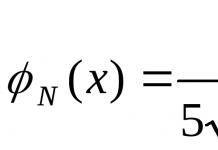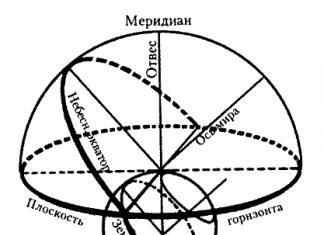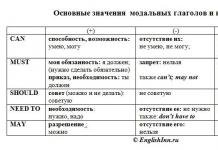The level of knowledge about the structure of atoms and molecules in the 19th century did not allow us to explain the reason why atoms form a certain number of bonds with other particles. But the ideas of scientists were ahead of their time, and valence is still studied as one of the basic principles of chemistry.
From the history of the emergence of the concept of “valence of chemical elements”
The outstanding English chemist of the 19th century, Edward Frankland, introduced the term “bond” into scientific use to describe the process of interaction of atoms with each other. The scientist noticed that some chemical elements form compounds with the same number of other atoms. For example, nitrogen attaches three hydrogen atoms to an ammonia molecule.
In May 1852, Frankland hypothesized that there was a specific number of chemical bonds that an atom could form with other tiny particles of matter. Frankland used the phrase "cohesive force" to describe what would later be called valence. A British chemist has determined how many chemical bonds the atoms of individual elements known in mid-19th centuries. Frankland's work became important contribution into modern structural chemistry.

Development of views
German chemist F.A. Kekule proved in 1857 that carbon is tetrabasic. In its simplest compound, methane, bonds arise with 4 hydrogen atoms. The scientist used the term “basicity” to denote the property of elements to attach a strictly defined number of other particles. In Russia, the data was systematized by A. M. Butlerov (1861). Further development of the theory chemical bond received thanks to the doctrine of periodic changes in the properties of elements. Its author is another outstanding D.I. Mendeleev. He proved that valence chemical elements in compounds, other properties are determined by the position they occupy in the periodic table.

Graphic representation of valency and chemical bond
The ability to visually depict molecules is one of the undoubted advantages of the valency theory. The first models appeared in the 1860s, and since 1864, they have been used, representing circles with chemical sign inside. Between the symbols of atoms, a dash is indicated, and the number of these lines is equal to the valency value. In those same years, the first ball-and-stick models were produced (see photo on the left). In 1866, Kekulé proposed a stereochemical drawing of the carbon atom in the form of a tetrahedron, which he included in his textbook Organic Chemistry.
The valence of chemical elements and the formation of bonds was studied by G. Lewis, who published his works in 1923. This is the name given to the smallest negatively charged particles that make up the shells of atoms. In his book, Lewis used dots around the four sides to represent valence electrons.
Valence of hydrogen and oxygen
Before its creation, the valence of chemical elements in compounds was usually compared with those atoms for which it was known. Hydrogen and oxygen were chosen as standards. Another chemical element attracted or replaced a certain number of H and O atoms.

In this way, properties were determined in compounds with monovalent hydrogen (the valence of the second element is indicated by a Roman numeral):
- HCl - chlorine (I):
- H 2 O - oxygen (II);
- NH 3 - nitrogen (III);
- CH 4 - carbon (IV).
In the oxides K 2 O, CO, N 2 O 3, SiO 2, SO 3, the oxygen valency of metals and non-metals was determined by doubling the number of added O atoms. The following values were obtained: K (I), C (II), N (III) , Si(IV), S(VI).
How to determine the valence of chemical elements
There are regularities in the formation of chemical bonds involving shared electron pairs:
- The typical valence of hydrogen is I.
- The usual valence of oxygen is II.
- For non-metal elements, the lowest valency can be determined by formula 8 - the number of the group in which they are located in the periodic table. The highest, if possible, is determined by the group number.
- For elements of side subgroups, the maximum possible valency is the same as their group number in the periodic table.
Determination of the valence of chemical elements according to the compound formula is carried out using the following algorithm:
- Write the known value for one of the elements above the chemical symbol. For example, in Mn 2 O 7 the valency of oxygen is II.
- Calculate the total value, for which you need to multiply the valence by the number of atoms of the same chemical element in the molecule: 2 * 7 = 14.
- Determine the valency of the second element for which it is unknown. Divide the value obtained in step 2 by the number of Mn atoms in the molecule.
- 14: 2 = 7. in it higher oxide—VII.
Constant and variable valence
The valency values for hydrogen and oxygen differ. For example, sulfur in the compound H 2 S is divalent, and in the formula SO 3 it is hexavalent. Carbon forms CO monoxide and CO 2 dioxide with oxygen. In the first compound the valence of C is II, and in the second it is IV. The same value in methane CH 4.

Most elements exhibit not constant, but variable valency, for example, phosphorus, nitrogen, sulfur. The search for the main causes of this phenomenon led to the emergence of theories of chemical bonding, ideas about the valence shell of electrons, molecular orbitals. Existence different meanings the same property was explained from the standpoint of the structure of atoms and molecules.
Modern ideas about valence
All atoms consist of a positive nucleus surrounded by negatively charged electrons. The outer shell they form is sometimes unfinished. The completed structure is the most stable, containing 8 electrons (octet). The emergence of a chemical bond due to shared electron pairs leads to an energetically favorable state of atoms.
The rule for forming compounds is to complete the shell by accepting electrons or giving away unpaired ones - depending on which process is easier. If an atom provides negative particles that do not have a pair to form a chemical bond, then it forms as many bonds as it has unpaired electrons. By modern ideas, the valence of atoms of chemical elements is the ability to form a certain number covalent bonds. For example, in the hydrogen sulfide molecule H 2 S, sulfur acquires valence II (-), since each atom takes part in the formation of two electron pairs. The "-" sign indicates the attraction of the electron pair to the more electronegative element. For those that are less electronegative, “+” is added to the valence value.

With the donor-acceptor mechanism, the process involves electron pairs of one element and free valence orbitals of another.
Dependence of valence on atomic structure
Let us consider, using carbon and oxygen as an example, how the valency of chemical elements depends on the structure of the substance. The periodic table gives an idea of the main characteristics of the carbon atom:
- chemical symbol - C;
- element number - 6;
- core charge - +6;
- protons in the nucleus - 6;
- electrons - 6, including 4 external ones, of which 2 form a pair, 2 - unpaired.
If the carbon atom in CO monoxide forms two bonds, then only 6 negative particles come into use. To acquire an octet, the pairs must form 4 external negative particles. Carbon has valency IV (+) in dioxide and IV (-) in methane.
The atomic number of oxygen is 8, the valence shell consists of six electrons, 2 of them do not form pairs and take part in chemical bonds and interactions with other atoms. The typical valence of oxygen is II (-).

Valence and oxidation state
In many cases it is more convenient to use the concept of “oxidation state”. This is the name given to the charge on an atom that it would acquire if all the bonding electrons were transferred to an element that has a higher electronegativity value (EO). The oxidation number in a simple substance is zero. A “-” sign is added to the oxidation state of an element that is more electronegative; a “+” is added to the oxidation state of an element that is less electronegative. For example, for metals of the main subgroups, oxidation states and ion charges equal to the group number with a “+” sign are typical. In most cases, the valence and oxidation state of atoms in the same compound are numerically the same. Only when interacting with more electronegative atoms is the oxidation state positive, with elements with lower EO is negative. The concept of “valency” is often applied only to substances with a molecular structure.
Instructions
The table is a structure in which chemical elements are arranged according to their principles and laws. That is, we can say that it is a multi-storey “house” in which chemical elements “live”, and each of them has its own apartment under a certain number. “Floors” are located horizontally, which can be small or large. If a period consists of two rows (as indicated by numbering on the side), then such a period is called large. If it has only one row, it is called small.
The table is also divided into “entrances” - groups, of which there are eight in total. Just as in any entrance, apartments are located on the left and right, so here the chemical elements are arranged in the same way. Only in this variant their placement is uneven - on one side there are more elements and then they talk about the main group, on the other there are fewer and this indicates that the group is secondary.
Valence is the ability of elements to form chemical bonds. There is a constant, which does not change, and a variable, which has a different value depending on what substance the element is part of. When determining valence using the periodic table, you need to pay attention to the following characteristics: the group number of the elements and its type (that is, the main or secondary group). The constant valency in this case is determined by the group number of the main subgroup. To find out the value of the variable valency (if there is one, and usually y), then you need to subtract the number of the group in which the element is located from 8 (8 groups in total - hence the number).
Example No. 1. If you look at the elements of the first group of the main subgroup (alkali metals), we can conclude that they all have a valency equal to I (Li, Na, K, Rb, Cs, Fr).
Example No. 2. The elements of the second group of the main subgroup (alkaline earth metals) respectively have valency II (Be, Mg, Ca, Sr, Ba, Ra).
Example No. 3. If we talk about non-metals, then for example, P (phosphorus) is in group V of the main subgroup. Hence its valency will be equal to V. In addition, phosphorus has one more valence value, and to determine it, you must perform step 8 - element number. This means 8 – 5 (phosphorus group number) = 3. Therefore, the second valency of phosphorus is III.
Example No. 4. Halogens are in group VII of the main subgroup. This means their valence will be VII. However, given that these are non-metals, you need to perform an arithmetic operation: 8 – 7 (element group number) = 1. Therefore, the other valency of the halogens is I.
For elements of secondary subgroups (and these include only metals), the valence must be remembered, especially since in most cases it is equal to I, II, less often III. You will also have to memorize the valencies of chemical elements that have more than two meanings.
Video on the topic
note
Be careful when identifying metals and non-metals. For this purpose, symbols are usually given in the table.
Sources:
- how to correctly pronounce the elements of the periodic table
- what is the valency of phosphorus? X
From school or even earlier, everyone knows that everything around, including ourselves, consists of atoms - the smallest and indivisible particles. Thanks to the ability of atoms to connect with each other, the diversity of our world is enormous. The ability of these atoms of a chemical element to form bonds with other atoms is called the valence of the element.
Instructions
The concept entered chemistry in the nineteenth century, when the valency of the hydrogen atom was taken as its unit. The valency of another element can be defined as the number of hydrogen that one atom of another substance attaches to itself. Similarly, the valence of hydrogen is determined by the valency of oxygen, which, as a rule, is equal to two and, therefore, allows you to determine the valency of other elements in compounds with simple arithmetic operations. The oxygen valence of an element is equal to twice the number of oxygen atoms that can attach to one atom of a given element.
To determine the valence of an element, you can also use the formula. It is known that there is a certain relationship between the valency of an element, its equivalent mass and the molar mass of its atoms. The relationship between these qualities is the formula: Valency = Molar mass of atoms / Equivalent mass. Since mass is the amount required to replace one mole of hydrogen or to react with one mole of hydrogen, the more molar mass in comparison with the equivalent mass, the greater the number of hydrogen atoms that can replace or attach to an atom of the element, and therefore the higher the valence.
The connection between chemical elements has a different nature. It can be a covalent bond, ionic, metallic. To form a bond, an atom must have: electric charge, an unpaired valence electron, a vacant valence orbital, or a lone pair of valence electrons. Together, these features determine the valence state and valence abilities of the atom.
Knowing the number of electrons of an atom, which is equal to the serial number of an element in the Periodic Table of Elements, guided by the principles of least energy, the Pauli principle and Hund’s rule, one can construct the electronic configuration of the atom. These constructions will allow us to analyze the valence capabilities of the atom. In all cases, the ability to form bonds due to the presence of unpaired valence electrons is primarily realized; additional valence abilities, such as a free orbital or a lone pair of valence electrons, may remain unrealized if there is not enough energy for this. And from all of the above, we can conclude that The easiest way is to determine the valence of an atom in any compound, and it is much more difficult to find out the valence abilities of atoms. However, practice will make this simple too.
Video on the topic
Tip 3: How to determine the valence of chemical elements
The valency of a chemical element is the ability of an atom to attach or replace a certain number of other atoms or atomic groups to form a chemical bond. It must be remembered that some atoms of the same chemical element may have different valencies in different compounds.

You will need
- Mendeleev table
Instructions
Hydrogen is considered to be a monovalent and divalent element, respectively. A measure of valency is the number of hydrogen or oxygen atoms that an element adds to form a hydride or . Let X be the element whose valence is to be determined. Then XHn is this element, and XmOn is its oxide. Example: - NH3, here valence is 3. Sodium is monovalent in the Na2O compound.
To determine the valency of an element, you need to multiply the number of hydrogen or oxygen atoms in the compound by the valency of hydrogen and oxygen, respectively, and then divide by the number of atoms of the chemical element whose valence is found.
The valence of an element can also be determined from other atoms with known valence. In different compounds, atoms of the same element can exhibit different valences. For example, it is divalent in H2S and CuS compounds, tetravalent in SO2 and SF4 compounds, hexavalent in SO3 and SF6 compounds.
The maximum valence of an element is considered equal to the number electrons in the outer electron shell of an atom. The maximum valence of elements of the same group of the periodic table usually corresponds to its atomic number. For example, the maximum valency of carbon atom C should be 4.
Video on the topic
Valency is the ability of chemical elements to hold a certain number of atoms of other elements. At the same time, it is the number of bonds formed by a given atom with other atoms. Determining valence is quite simple.

Instructions
Please note that the valency of the atoms of some elements is constant, while others are variable, that is, they tend to change. For example, hydrogen in all compounds is monovalent because it forms only one bond. Oxygen is capable of forming two bonds, while being divalent. But y may have II, IV or VI. It all depends on the element with which it is connected. Thus, sulfur is an element with variable valence.
Note that in molecules hydrogen compounds Calculating valency is very simple. Hydrogen is always monovalent, and this indicator for the element associated with it will be equal to the number of hydrogen atoms in a given molecule. For example, in CaH2 calcium will be divalent.
Remember the main rule for determining valency: the product of the valence index of an atom of any element and the number of its atoms in any molecule is always equal to the product of the valence index of an atom of the second element and the number of its atoms in a given molecule.
Look at the letter formula for this equality: V1 x K1 = V2 x K2, where V is the valency of the atoms of the elements, and K is the number of atoms in the molecule. With its help, it is easy to determine the valence index of any element if the remaining data is known.
Consider the example of the sulfur oxide molecule SO2. Oxygen in all compounds is divalent, therefore, substituting the values into the proportion: Voxygen x Oxygen = Vsulfur x Xers, we get: 2 x 2 = Vsulfur x 2. From here Vsulfur = 4/2 = 2. Thus, the valence of sulfur in this molecule is equal 2.
Video on the topic
Valence is the most important concept in chemistry. Physical meaning This concept became clear thanks to the development of the doctrine of chemical bonds. The valence of an atom is determined by the number of covalent bonds by which it is connected to other atoms.
Valency is the ability of an atom of a given element to form a certain number of chemical bonds.
Figuratively speaking, valency is the number of “hands” with which an atom clings to other atoms. Naturally, atoms do not have any “hands”; their role is played by the so-called. valence electrons.
You can say it differently: Valence is the ability of an atom of a given element to attach a certain number of other atoms.
The following principles must be clearly understood:
There are elements with constant valence (of which there are relatively few) and elements with variable valence (of which the majority are).
Elements with constant valency must be remembered:
The remaining elements may exhibit different valencies.
The highest valence of an element in most cases coincides with the number of the group in which the element is located.
For example, manganese is in group VII (side subgroup), the highest valence of Mn is seven. Silicon is located in group IV ( main subgroup), its highest valency is four.
It should be remembered, however, that the highest valency is not always the only possible one. For example, the highest valency of chlorine is seven (make sure of this!), but compounds in which this element exhibits valences VI, V, IV, III, II, I are known.
It's important to remember a few exceptions: the maximum (and only) valence of fluorine is I (and not VII), oxygen - II (and not VI), nitrogen - IV (the ability of nitrogen to exhibit valence V is a popular myth that is found even in some school textbooks).
Valence and oxidation state are not identical concepts.
These concepts are quite close, but they should not be confused! The oxidation state has a sign (+ or -), the valence does not; the oxidation state of an element in a substance can be zero, the valency is zero only if we are dealing with an isolated atom; the numerical value of the oxidation state may NOT coincide with the valence. For example, the valency of nitrogen in N 2 is III, and the oxidation state = 0. The valence of carbon in formic acid is = IV, and the oxidation state = +2.
If the valence of one of the elements in a binary compound is known, the valency of the other can be found.
This is done very simply. Remember the formal rule: the product of the number of atoms of the first element in a molecule and its valency must be equal to a similar product for the second element.
In the compound A x B y: valency (A) x = valence (B) y
Example 1. Find the valencies of all elements in the compound NH 3.
Solution. We know the valence of hydrogen - it is constant and equal to I. We multiply the valency H by the number of hydrogen atoms in the ammonia molecule: 1 3 = 3. Therefore, for nitrogen, the product of 1 (the number of atoms N) by X (the valence of nitrogen) should also be equal to 3. Obviously, X = 3. Answer: N(III), H(I).
Example 2. Find the valences of all elements in the Cl 2 O 5 molecule.
Solution. Oxygen has a constant valency (II); the molecule of this oxide contains five oxygen atoms and two chlorine atoms. Let the valence of chlorine = X. Let's create the equation: 5 2 = 2 X. Obviously, X = 5. Answer: Cl(V), O(II).
Example 3. Find the valence of chlorine in the SCl 2 molecule if it is known that the valency of sulfur is II.
Solution. If the authors of the problem had not told us the valence of sulfur, it would have been impossible to solve it. Both S and Cl are elements with variable valency. Taking into account additional information, the solution is constructed according to the scheme of examples 1 and 2. Answer: Cl(I).
Knowing the valencies of two elements, you can create a formula for a binary compound.
In examples 1 - 3, we determined valency using the formula; now let's try to do the reverse procedure.
Example 4. Write a formula for the compound of calcium and hydrogen.
Solution. The valencies of calcium and hydrogen are known - II and I, respectively. Let the formula of the desired compound be Ca x H y. We again compose the well-known equation: 2 x = 1 y. As one of the solutions to this equation, we can take x = 1, y = 2. Answer: CaH 2.
“Why exactly CaH 2? - you ask. - After all, the variants Ca 2 H 4 and Ca 4 H 8 and even Ca 10 H 20 do not contradict our rule!”
The answer is simple: take the minimum possible values x and y. In the example given, these minimum (natural!) values are exactly 1 and 2.
“So, compounds like N 2 O 4 or C 6 H 6 are impossible?” you ask. “Should these formulas be replaced with NO 2 and CH?”
No, they are possible. Moreover, N 2 O 4 and NO 2 are completely different substances. But the formula CH does not correspond to any real stable substance at all (unlike C 6 H 6).
Despite all that has been said, in most cases you can follow the rule: take smallest values indexes.
Example 5. Write a formula for the compound of sulfur and fluorine if it is known that the valence of sulfur is six.
Solution. Let the formula of the compound be S x F y . The valence of sulfur is given (VI), the valency of fluorine is constant (I). We formulate the equation again: 6 x = 1 y. It is easy to understand that the smallest possible values of the variables are 1 and 6. Answer: SF 6.
Here, in fact, are all the main points.
Now check yourself! I suggest you go through a short test on the topic "Valence".
In chemistry lessons, you have already become acquainted with the concept of valence of chemical elements. We have collected all in one place useful information about this question. Use it when you prepare for the State Exam and the Unified State Exam.
Valency and chemical analysis
Valence– the ability of atoms of chemical elements to enter into chemical compounds with atoms of other elements. In other words, it is the ability of an atom to form a certain number of chemical bonds with other atoms.
From Latin the word “valence” is translated as “strength, ability.” A very correct name, right?
The concept of “valence” is one of the basic ones in chemistry. It was introduced even before scientists knew the structure of the atom (back in 1853). Therefore, as we studied the structure of the atom, it underwent some changes.
Thus, from the point of view of electronic theory, valence is directly related to the number of outer electrons of an element’s atom. This means that by “valence” we mean the number of electron pairs with which an atom is connected to other atoms.
Knowing this, scientists were able to describe the nature of the chemical bond. It lies in the fact that a pair of atoms of a substance shares a pair of valence electrons.
You may ask, how were chemists of the 19th century able to describe valence even when they believed that there were no particles smaller than an atom? This is not to say that it was so simple - they relied on chemical analysis.
By chemical analysis scientists of the past determined the composition chemical compound: how many atoms various elements contained in the molecule of the substance in question. To do this, it was necessary to determine what the exact mass of each element in a sample of pure (without impurities) substance was.
True, this method is not without flaws. Because the valence of an element can be determined in this way only in its simple combination with always monovalent hydrogen (hydride) or always divalent oxygen (oxide). For example, the valency of nitrogen in NH 3 is III, since one hydrogen atom is bonded to three nitrogen atoms. And the valency of carbon in methane (CH 4), according to the same principle, is IV.
This method for determining valency is only suitable for simple substances. But in acids, in this way we can only determine the valency of compounds such as acidic residues, but not of all elements (except for the known valency of hydrogen) individually.
As you have already noticed, valence is indicated by Roman numerals.
Valency and acids
Since the valence of hydrogen remains unchanged and is well known to you, you can easily determine the valence of the acid residue. So, for example, in H 2 SO 3 the valency of SO 3 is I, in HСlO 3 the valency of СlO 3 is I.
In a similar way, if the valency of the acid residue is known, it is easy to write correct formula acids: NO 2 (I) – HNO 2, S 4 O 6 (II) – H 2 S 4 O 6.
Valency and formulas
The concept of valency makes sense only for substances of a molecular nature and is not very suitable for describing chemical bonds in compounds of a cluster, ionic, crystalline nature, etc.
Indices in the molecular formulas of substances reflect the number of atoms of the elements that are included in their composition. Knowing the valence of elements helps to correctly place the indices. In the same way, looking at molecular formula and indices, you can name the valences of the constituent elements.
You do tasks like this in chemistry lessons at school. For example, having chemical formula a substance in which the valence of one of the elements is known, the valency of another element can be easily determined.
To do this, you just need to remember that in a substance of a molecular nature, the number of valences of both elements is equal. Therefore, use the least common multiple (corresponding to the number of free valencies required for the compound) to determine the valence of an element that is unknown to you.
To make it clear, let's take the formula of iron oxide Fe 2 O 3. Here, two iron atoms with valency III and 3 oxygen atoms with valency II participate in the formation of a chemical bond. Their least common multiple is 6.
- Example: you have the formulas Mn 2 O 7. You know the valence of oxygen, it is easy to calculate that the least common multiple is 14, hence the valence of Mn is VII.
In a similar way, you can do the opposite: write down the correct chemical formula of a substance, knowing the valences of its elements.
- Example: to correctly write the formula of phosphorus oxide, we take into account the valency of oxygen (II) and phosphorus (V). This means that the least common multiple for P and O is 10. Therefore, the formula has the following form: P 2 O 5.
Knowing well the properties of elements that they exhibit in various compounds, it is possible to determine their valence even by appearance such connections.
For example: copper oxides are red (Cu 2 O) and black (CuO) in color. Copper hydroxides are colored yellow (CuOH) and blue (Cu(OH) 2).
To make covalent bonds in substances more visual and understandable for you, write them down structural formulas. The lines between the elements represent the bonds (valency) that arise between their atoms:

Valency characteristics
Today, the determination of the valency of elements is based on knowledge of the structure of the outer electronic shells of their atoms.
Valency can be:
- constant (metals of the main subgroups);
- variable (non-metals and metals of secondary groups):
- higher valence;
- lowest valence.
The following remains constant in various chemical compounds:
- valency of hydrogen, sodium, potassium, fluorine (I);
- valency of oxygen, magnesium, calcium, zinc (II);
- valency of aluminum (III).
But the valency of iron and copper, bromine and chlorine, as well as many other elements changes when they form various chemical compounds.
Valence and electron theory
Within the framework of electronic theory, the valence of an atom is determined based on the number of unpaired electrons that participate in the formation of electron pairs with electrons of other atoms.
Only electrons located in the outer shell of an atom participate in the formation of chemical bonds. Therefore, the maximum valency of a chemical element is the number of electrons in the outer electron shell of its atom.
The concept of valence is closely related to Periodic law, discovered by D.I. Mendeleev. If you look carefully at the periodic table, you can easily notice: the position of an element in the periodic system and its valency are inextricably linked. The highest valence of elements that belong to the same group corresponds to the ordinal number of the group in the periodic table.
You will find out the lowest valency when you subtract the group number of the element that interests you from the number of groups in the periodic table (there are eight of them).
For example, the valency of many metals coincides with the numbers of the groups in the table of periodic elements to which they belong.
Table of valency of chemical elements
|
Serial number chem. element (atomic number) |
Name |
Chemical symbol |
Valence |
| 1 | Hydrogen Helium Lithium Beryllium Carbon Nitrogen / Nitrogen Oxygen Fluorine Neon / Neon Sodium/Sodium Magnesium / Magnesium Aluminum Silicon Phosphorus / Phosphorus Sulfur/Sulfur Chlorine Argon / Argon Potassium/Potassium Calcium Scandium / Scandium Titanium Vanadium Chrome / Chromium Manganese / Manganese Iron Cobalt Nickel Copper Zinc Gallium Germanium Arsenic/Arsenic Selenium Bromine Krypton / Krypton Rubidium / Rubidium Strontium / Strontium Yttrium / Yttrium Zirconium / Zirconium Niobium / Niobium Molybdenum Technetium / Technetium Ruthenium / Ruthenium Rhodium Palladium Silver Cadmium Indium Tin/Tin Antimony / Antimony Tellurium / Tellurium Iodine / Iodine Xenon / Xenon Cesium Barium / Barium Lanthanum / Lanthanum Cerium Praseodymium / Praseodymium Neodymium / Neodymium Promethium / Promethium Samarium / Samarium Europium Gadolinium / Gadolinium Terbium / Terbium Dysprosium / Dysprosium Holmium Erbium Thulium Ytterbium / Ytterbium Lutetium / Lutetium Hafnium / Hafnium Tantalum / Tantalum Tungsten/Tungsten Rhenium / Rhenium Osmium / Osmium Iridium / Iridium Platinum Gold Mercury Thalium / Thallium Lead/Lead Bismuth Polonium Astatine Radon / Radon Francium Radium Actinium Thorium Proactinium / Protactinium Uranium / Uranium |
H | I (I), II, III, IV, V I, (II), III, (IV), V, VII II, (III), IV, VI, VII II, III, (IV), VI (I), II, (III), (IV) I, (III), (IV), V (II), (III), IV (II), III, (IV), V (II), III, (IV), (V), VI (II), III, IV, (VI), (VII), VIII (II), (III), IV, (VI) I, (III), (IV), V, VII (II), (III), (IV), (V), VI (I), II, (III), IV, (V), VI, VII (II), III, IV, VI, VIII (I), (II), III, IV, VI (I), II, (III), IV, VI (II), III, (IV), (V) No data No data (II), III, IV, (V), VI |
Those valences that the elements possessing them rarely exhibit are given in parentheses.
Valence and oxidation state
Thus, speaking about the degree of oxidation, it is meant that an atom in a substance of ionic (which is important) nature has a certain conventional charge. And if valence is a neutral characteristic, then the oxidation state can be negative, positive or equal to zero.
It is interesting that for an atom of the same element, depending on the elements with which it forms a chemical compound, the valence and oxidation state can be the same (H 2 O, CH 4, etc.) or different (H 2 O 2, HNO 3 ).
Conclusion
By deepening your knowledge of the structure of atoms, you will learn more deeply and in more detail about valency. This description of chemical elements is not exhaustive. But it has great practical significance. What have you yourself been convinced of more than once while solving problems and conducting chemical experiments on lessons.
This article is designed to help you organize your knowledge about valence. And also remind you how it can be determined and where valence is used.
We hope you find this material useful in preparing your homework and self-preparing for tests and exams.
blog.site, when copying material in full or in part, a link to the original source is required.
Concept valence comes from the Latin word “valentia” and was known back in the mid-19th century. The first “extensive” mention of valence was in the works of J. Dalton, who argued that all substances consist of atoms connected to each other in certain proportions. Then, Frankland introduced the very concept of valence, which was further developed in the works of Kekule, who spoke about the relationship between valency and chemical bonding, A.M. Butlerov, who in his theory of structure organic compounds associated valence with reactivity of one or another chemical compound and D.I.
Mendeleev (in the Periodic Table of Chemical Elements, the highest valence of an element is determined by the group number).
Valence DEFINITION
is the number of covalent bonds that an atom can form when combined with a covalent bond.
The valence of an element is determined by the number of unpaired electrons in an atom, since they take part in the formation of chemical bonds between atoms in the molecules of compounds.
The ground state of an atom (state with minimum energy) is characterized by the electronic configuration of the atom, which corresponds to the position of the element in the Periodic Table. An excited state is a new energy state of an atom, with a new distribution of electrons within the valence level. Electronic configurations of electrons in an atom can be depicted not only in the form electronic formulas
, but also with the help of electronic graphic formulas (energy, quantum cells). Each cell denotes an orbital, an arrow indicates an electron, the direction of the arrow (up or down) indicates the spin of the electron, a free cell represents a free orbital that an electron can occupy when excited. If there are 2 electrons in a cell, such electrons are called paired, if there is 1 electron, they are called unpaired. For example:
6 C 1s 2 2s 2 2p 2
The orbitals are filled as follows: first, one electron with the same spins, and then a second electron with opposite spins. Since the 2p sublevel has three orbitals with the same energy, each of the two electrons occupied one orbital. One orbital remained free.
Determination of the valence of an element using electronic graphic formulas The valence of an element can be determined using electron graphic formulas electronic configurations
electrons in an atom. Let's consider two atoms - nitrogen and phosphorus.

7 N 1s 2 2s 2 2p 3
Because The valency of an element is determined by the number of unpaired electrons, therefore, the valence of nitrogen is III. Since the nitrogen atom has no empty orbitals, an excited state is not possible for this element. However, III is not the maximum valence of nitrogen, the maximum valence of nitrogen is V and is determined by the group number. Therefore, it should be remembered that using electronic graphic formulas it is not always possible to determine the highest valency, as well as all the valences characteristic of this element.

In the ground state, the phosphorus atom has 3 unpaired electrons, therefore, the valence of phosphorus is III. However, in the phosphorus atom there are free d-orbitals, therefore electrons located on the 2s sublevel are able to pair up and occupy vacant orbitals of the d-sublevel, i.e. go into an excited state.

Now the phosphorus atom has 5 unpaired electrons, therefore phosphorus also has a valence of V.
Elements having multiple valence values
Elements of groups IVA – VIIA can have several valency values, and, as a rule, the valency changes in steps of 2 units. This phenomenon is due to the fact that electrons participate in pairs in the formation of a chemical bond.
Unlike the elements of the main subgroups, the elements of the B-subgroups in most compounds do not exhibit a higher valency equal to the group number, for example, copper and gold. In general, transition elements show great diversity chemical properties, which is explained by a large set of valences.
Let us consider the electronic graphic formulas of the elements and establish why the elements have different valences (Fig. 1).

Tasks: determine the valence possibilities of As and Cl atoms in the ground and excited states.


























